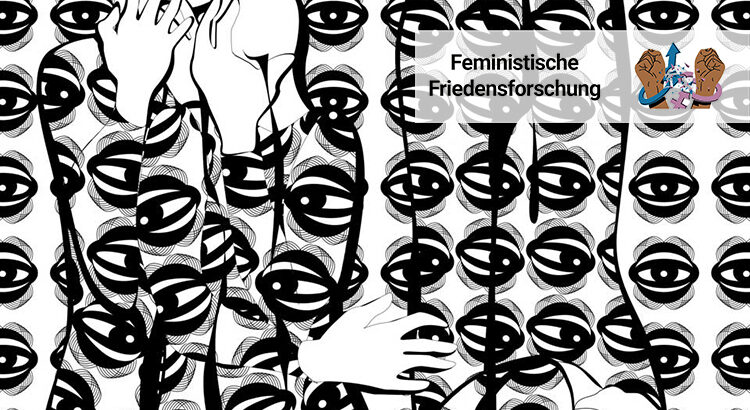Iran’s streets have been the scene of inspiring portraits created by women and young girls chanting “women, life, freedom” over the past six weeks. Starting as a reaction to the death of 22-year-old Zhina (Mahsa) Amini, who was killed by the so-called “morality police” for wearing her hijab improperly, the protests have now turned into a cross-class, women-led movement for democracy and rule of law. Building upon the experience and the collective consciousness of the preceding movements for democracy in the country, this movement is unique in terms of duration, density, and cross-class nature. This post briefly looks at the situation of women from a historical perspective after the Islamic revolution and argues that women’s rights are acting as a connector to unite different groups and social classes fighting for democracy and rule of law in the current protests.
Compulsory Hijab: Women after the Islamic Revolution
In 1979, Iranian women and men contributed to the last revolution of the 20th century in Iran against the Shah regime. Shortly after the revolution, the Islamic republic announced that the hijab is compulsory for all women. This was met with resistance when some Iranian women protested on international’s women’s day against the compulsory hijab. The so-called unveiled protests of compulsory hijab were not only oppressed by the government but also overshadowed by a collective compromise to focus on the bigger fight for overall independence and social justice. In other words, overthrowing the Shah’s US-backed regime, independence from foreign domination and demanding social justice were considered a priority as opposed to protecting the new law by various opposition groups (the leftists, secularists, the national front, and the Islamists uniting under the name of Khomeini). This was the beginning of the reproduction of profound patriarchal oppression under the cover of a theocratic regime. The new regime mixed the traditional patriarchal culture and radical interpretations of Islamic jurisprudence in the years to come. The beginning and continuation of the 8-year war between Iran and Iraq (1980 to 1988) contributed to a tendency to look at women’s rights issues as secondary and to focus on the general discourse around the war and Iran’s territorial integrity. Simply as this was not the “right time” to talk about them.
After the end of the Iran and Iraq war and with the beginning of the reconstruction period, women’s participation increased significantly in education, sports, arts etc. The presence of women on all fronts specifically the political front was fortified by new reformist tendencies within parts of the government in 1997-2005 (in form of presidential elections). During President Khatami’s time, women were appointed as vice presidents and elected to parliaments. Civil society movements including those working on women’s rights were strengthened, and women won legal victories on different fronts.
Parts of the conservative ruling elites perceived this new era of increased participation of women as a threat to the identity of the Islamic republic. The radical fundamentalist parts of the government eliminated such reformist tendencies in the upcoming years resulting in severe impacts on women’s rights movements. The final attack on reformist tendencies took the form of the widespread oppression of the green movement in 2009. A peaceful movement, led by men and women for civil rights and the freedom of expression protesting electoral fraud. The protests, marked by the outstanding presence of middle-class and educated women, triggered a counter-action by the regime followed by the “Islamisation” of universities, banning female students from studying certain subjects and going back to “traditional values” by cutting down family planning programs and sex education at universities.
In 2019, the disqualification of candidates with reformist tendencies resulted in a low turnout of the election and an uncompetitive election. The election of President Raisi and the unification of the political regime ended any prospect of possible political change, including the women’s rights movements through reformist means. This meant one thing: systematic limitations on civil and political rights throughout the country. Women, having found a more stable position in the social existence both in numbers and quality in the past decades, were at the core of this aggression.
A New Generation: “For my Sister, your Sister and our Sisters”
Throughout the years, women’s rights movements were part of the broader mobilization for political opening, but democratization was prioritized by the broader movement over women’s rights. This was directly linked to two factors: First, the general severe social oppression and second the patriarchal traditional culture of the society. The death of Zhina (Mahsa) Amini symbolizes decades of disappointment in the oppression of the feminist civil society movements, the daily humiliation of women and denial of their basic human rights, the dissatisfaction with the anti-feminist civil and criminal legal system, and the lack of the freedom to express themselves.
A unique aspect of this movement is the presence of the younger generation, particularly school students in the protests and strikes. This is the first time after the revolution that this age group contributes to any political movement or protest. The deeply formed gap between the young generation with the injected normative paradigms dictated by the government has made the movement particularly compelling to them. They believe that conditioning the social fight for their rights to major political changes and considering it secondary is nothing but the compelled patriarchal narrative. This new generation—the internationalized generation of social media—does not share the same values with the traditional patriarchal society and the dictated paradigms of the regime. Furthermore, the new generation is conscious, direct, and very clear on what they do not want. This collective awareness owes to all the sub-movements and protests their parents and older generations fought over the past 43 years. Additionally, the reduced generational gap has led parents, daughters, and sons to all unite around shared values. In touching, fearless videos on social media during the past weeks, parents of young victims demand the protestors to continue the protests and seek justice.
Finally, is it “just” about Women’s Rights?
This is an immense movement, an inspiration serving as a connector and unifying all the movements in search of democracy and rule of law within the country. In contrast to previous protests—such as the Iran student protests (1999), the green movement (2009), the Aban protests (2019), labour movements, the girls of the revolution street against compulsory hijab (2018) etc.—the existing movement has attracted various and diverse groups. This means that in addition to women, different social classes and groups have already been joining the protests including universities, artists, workers, activists, parts of the Bazar (by merchants) and a massive number of Iranian diaspora (to name a few, Europe, the US, Canada, Australia and more). For instance, on 22d October, a huge rally took place in Berlin, Germany. Around 80000 Iranians travelling from different parts of Europe and the world took part in the rally to show their solidarity with the ongoing protests in Iran. This marks the movement as the first widespread protest after the revolution also in terms of duration and density in the country. Additionally, the protests started with women’s rights and demands became broader and more encompassing in the course of events. The compulsory hijab and the anti-feminist legal system are acting as pieces of a bigger puzzle representing the general oppression, disagreements with Iran’s international relations policy, poverty, mismanagement, human rights situation, destruction of the environment, and lack of public trust. The oppression of women is the tip of a massive iceberg that represents a bigger dissatisfaction with what the theocratic regime stands for.
Despite the excessive use of lethal force and the increase in the number of deaths, the movement has continued to be peaceful with a strong presence of women in its sixth week. This is a quality that has the potential to change the image of women-led movements not only in the region but also in the international sphere. It has rightfully been stated that this movement has changed the colonial feminism stereotypes of women as victims. The Iranian women today are not fragile victims, they do not compromise or wait for an outsider to be rescued, they go to the streets, stand up against the special guards, face death, and fight for their civil rights. The slogan “women, life, freedom” travelling from Turkey and later used by brave Kurdish female fighters in their armed combat against ISIS in Syria and Iraq, has now shifted into the main slogan of an inclusive peaceful fight led by women for democracy, social justice, and rule of law in the context of Iran.
“For this forced heaven” and “for my sister, your sister and our sisters” are translated quotes from a song that was produced by the Iranian artist Shervin Hajipour during the protests. He used the tweets of Iranians representing why they are protesting on the streets. See here.
We thank Parastou Forouhar for generously providing us with the image.


